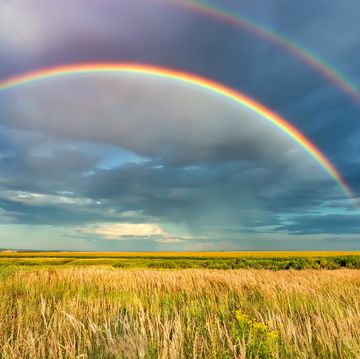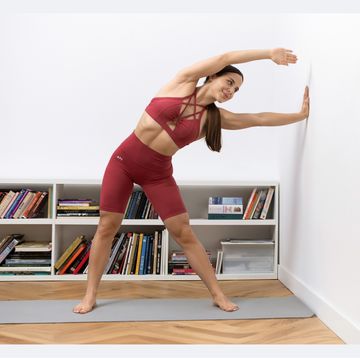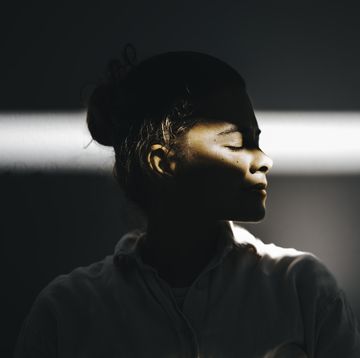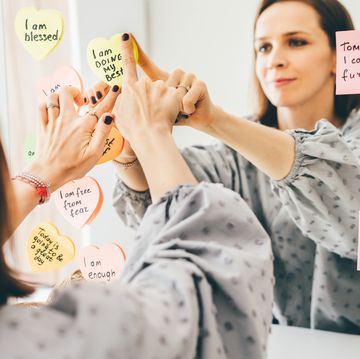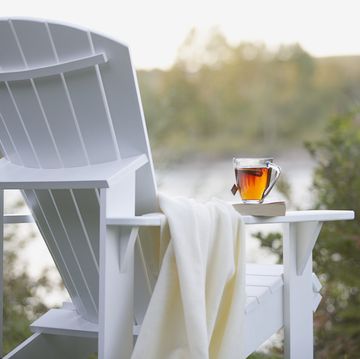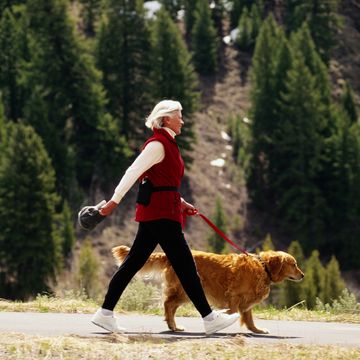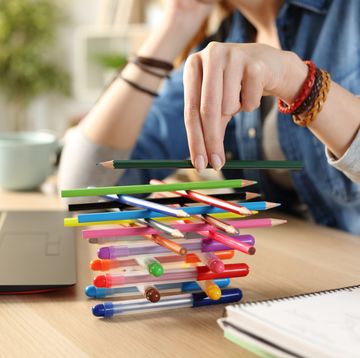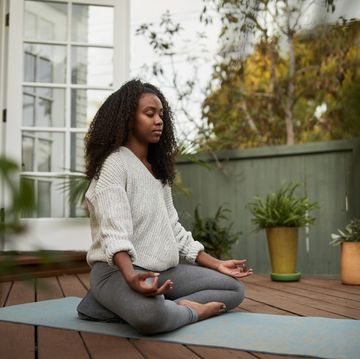Finding something healthy to drink used to be as simple as turning on the faucet, but now even water is complicated. You can choose from bottled or tap, sweetened naturally or artificially, vitamin-enhanced or subtly flavored. "There are more types of water beverages on the market today than ever before," says Gary Hemphill, managing director of the Beverage Marketing Corporation, a research and consulting firm. "People want healthy options, including fewer calories, natural ingredients and added benefits." But does your latte count toward your fluid needs? Can water help you lose weight? And just how much is a person really supposed to drink? Read on for the answers.
1. You don't really need to drink eight glasses of water a day.
The 8-glasses recommendation is not a hard-and-fast rule, says Heidi Skolnik, MS, a certified dietitian-nutritionist and coauthor of Nutrient Timing for Peak Performance. The Institute of Medicine recommends that women have about 11½ cups of fluids a day (15½ for men), but at least 20 percent of that typically comes from what you eat, taking the drinkable number down to about 9 cups. And remember, a cup isn't much, just 8 ounces (a standard soda can is 12). But don't get obsessed with the numbers. "Your needs fluctuate from day to day depending on how active you are, what types of foods you're eating and how often, and what the weather is like," says Skolnik. A better way to judge your water needs: Take a quick glance down the next time you're in the ladies' room. "If you're hydrating right, you should be going every two to three hours and your pee should be a lemonade color," she adds. If it looks more like apple juice and is a bit pungent, get sipping.
2. Drinking coffee—or any caffeinated beverage—won't make you dehydrated.
"In the past few years, research has shown that caffeine does not have the same drastic diuretic effect we once thought," says Michael Bergeron, PhD, director of the National Institute for Athletic Health and Performance at the Sanford University of South Dakota Medical Center. In fact, one study found that caffeine only causes you to urinate as much as drinking water does. So 8 ounces of joe is still 8 ounces of fluid, and every drop of it counts.
3. Water alone isn't a weight-loss aid.
For those of you chugging water thinking it's going to help melt off those pounds, better not concentrate all of your efforts there. "There's no scientific evidence that drinking water is going to make you feel fuller," says weight-loss researcher Barbara Rolls, PhD, a professor of nutritional sciences at Penn State University and the author of The Volumetrics Eating Plan. Her research found that water helps when it's part of a high-volume food like a vegetable or soup. One of her recent studies found that women who ate vegetables like broccoli in place of more calorie-dense foods like rice or meat ate significantly fewer calories overall. "Water-rich foods look bigger, and that can help trick your brain into thinking you're eating more than you really are," adds Dr. Rolls. What drinking enough can do is ensure you're not mistaking thirst for hunger, which can help keep your appetite in check. "Having any no-calorie drink while you eat can help you slow down so you're not just attacking your food," explains Skolnik.
4. Don't wait until you're thirsty to drink.
The thirst mechanism usually kicks in when you're about 1 to 2 percent dehydrated—measured by a change in body weight based on sweat loss. Your body maintains a certain amount of sodium in the blood and overall fluid, and if either one of those levels is out of whack, the thirst sensors in your brain will send warning signs that it's time to drink up. Actual dehydration happens when you've lost at least 2 percent of your body weight, but you can feel the effects (headaches, nausea, dizziness) sooner. So make sure to drink up all day long.
5. You can drink too much water.
"Drinking water faster than your kidneys can process it can upset the balance of electrolytes in your blood, possibly causing swelling in the brain, seizures, coma and even death," says Dr. Bergeron. In 2007, a California woman died of water intoxication after drinking nearly 2 gallons of water in three hours as part of a radio contest to see who could drink the most water without urinating. On a less dramatic level, overhydration can have some of the same warning signs of dehydration, including nausea and headaches. Although it's unlikely that in the normal course of life you'll overhydrate to a dangerous level, keep in mind that your kidneys can process no more than 1 liter (34 ounces) per hour. So don't drink too much at once.
6. You don't need a sports drink every time you exercise.
Heading out for a 30-minute power walk? You probably don't need to guzzle down a Gatorade. "Sports drinks have a place if you're exercising intensely for an hour or more, or sweating profusely," says Skolnik. "Otherwise you probably already have all the carbs and electrolytes you need." Consider this: A brisk 30-minute walk burns about 170 calories; 2 cups of a sports drink has 100 calories. Which means that about 60 percent of your workout expenditure just went down your throat.
7. Cold water is no better for you to drink than warm.
Another weight-loss misconception: Your body has to work harder to absorb cold water, which will speed up be well now your metabolism. "There's no scientific data to back this up," says Lona Sandon, RD, an assistant professor of clinical nutrition at the University of Texas Southwestern Medical Center. "The change in your metabolism is so negligible that it won't make a real difference one way or another." If cold tastes better, you're more likely to sip it, so go ahead and add the ice. To boost your metabolism, hit the gym.
8. All plain bottled water is basically the same.
The bottles may look different, but water is essentially water. What is different is the source. Some is bottled municipal tap water (like Aquafina or Dasani), some comes from natural springs (like Poland Spring), some is imported from natural water supplies (like Fiji Water or Evian). Bottom line: It comes down to price, convenience and taste. (One exception is Smartwater, which is tap water enhanced with electrolytes.)
All photos by Shutterstock.



